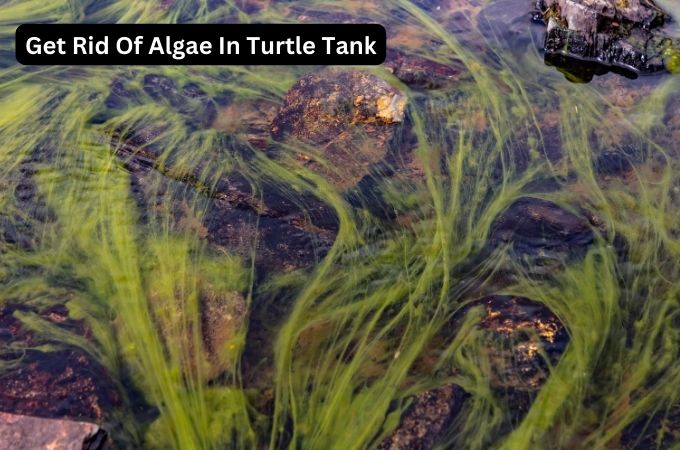turtle migration : why? where?when?
Today we discuss turtle migration. Have you ever wondered why turtles migrate? Turtles have been known to traverse thousands of miles during their annual migrations. From the shallow waters near shore, and down through winding rivers, all the way across vast oceans—turtles are some of nature’s most incredible voyagers. In fact, certain species such as the endangered leatherback turtles can travel from as far away as Africa to breed in Costa Rica! But why do they make such long-distance trips? To answer this question, it is important to understand turtle migration from both a scientific and evolutionary perspective. Through research conducted on these majestic creatures over many years, scientists have determined that turtle migration is an adaptive behavior for seeking optimal temperatures for development and reproduction. This blog post will explore how natural selection has driven turtles’ extraordinary capacity for long distance movement experiences!
Overview of Turtle Migration – Types of Turtles and their Migratory Habits:
Fascinatingly, there are many different species of turtles that migrate regularly. From the leopard turtle to the loggerhead turtle, each species travels incredible distances and takes unique paths during migration. While some stay relatively close to their original habitats, others swim across entire oceans and continents, often driven by seasonal changes or environmental needs. For example, green sea turtles may travel over 3,000 miles from South America to North America in search of suitable nesting sites while softshell turtles venture much shorter distances in order to breed in specific freshwater habitats. Such amazing journeys showcase how adaptable these hardy creatures can be!
How Do Turtles Know When to Migrate and Where to Go:
Unravelling the secrets behind turtles’ migration marvel is a fascinating exploration into the realm of nature’s wonders. Brilliantly, these enigmatic creatures possess an uncanny sense of navigation that allows them to traverse vast expanses to mate, nest, and feed.
While scientists have long puzzled over the workings of this mysterious ability, recent studies have revealed that turtles are endowed with an extraordinary sense of magnetic orientation. As if equipped with a built-in compass, turtles rely on the Earth’s magnetic field to navigate their way through the treacherous ocean currents to ultimately reach their destinations. Intriguingly, research has also shown a correlation between seasonal changes and turtles’ migration patterns.
As air and water temperatures gradually drop, these cold-blooded reptiles instinctively respond to the shifting climate by migrating to warmer waters, ensuring their survival in the face of adversity. Indeed, the study of turtles’ navigational prowess continues to intrigue and inspire, intertwining the complexities of life and the awe-inspiring beauty of the natural world.
The Challenges Faced by Turtle Migration:
The fascinating journey of turtle migration is not only an awe-inspiring spectacle but also a critical process essential for the survival of these captivating marine creatures. However, this incredible phenomenon is marred by various challenges that the turtles face, putting their very existence at stake.
Of these, human activities are largely culpable; for instance, the expansion of coastal development hampers the natural nesting grounds, forcing the turtles to cross treacherous terrain to lay their eggs.
Furthermore, pollution in the form of plastics and chemicals poses a significant threat to their well-being, often causing entanglements and poisoning that impair their ability to migrate successfully.
Lastly, climate change and the ensuing alteration of ocean currents entail obstacles for the turtles, as such changes disorient them, which in turn disrupts their finely-tuned navigation abilities. As we pause to admire and acknowledge the miracles of nature, it is crucial to actively work towards mitigating these challenges to ensure the continued thriving of these gentle giants in our oceans.
Environmental Factors Affecting the Success of Turtle Migration:
The magnificent journey of turtle migration is a fascinating natural phenomenon that relies heavily on a delicate balance of environmental factors. As these creatures migrate over vast distances to reach their breeding grounds or feeding sites, various factors such as temperature, ocean currents, and human interference can greatly impact their success.
For instance, rising sea levels and temperatures due to climate change can cause alterations in sand temperatures at nesting beaches, affecting the incubation process and the sex ratio of hatchlings.
Furthermore, changing ocean currents can alter the routes these turtles follow, leading to energy-intensive deviations and possible exposure to predators. Tragically, human activities such as pollution, commercial fishing, and coastal developments also play a significant role – from entangling these majestic travellers in fishing nets to destroying their nesting sites. Consequently, understanding and addressing these environmental factors is crucial in order to ensure the survival and success of these remarkable creatures in their epic migrations.
Protecting Habitats Critical to Turtle Migration:
Turtle migration is a fascinating natural phenomenon and highlights the critical importance of preserving and protecting their habitats. These incredible creatures embark on extraordinary journeys each year, sometimes travelling thousands of miles to find feeding, resting and nesting sites.
Over their lifespans, turtles face numerous challenges such as increasing pollution, climate change and human interference, all of which contribute to habitat loss and directly impact migration patterns.
It is our shared responsibility to protect these habitats, as well as other marine and coastal ecosystems, to ensure that these marvellous creatures have a fighting chance to survive and continue their awe-inspiring migrations.
Through careful conservation efforts and the dedication of researchers and local communities, we can help safeguard these vital environments and guarantee a bright future for turtles and the precious ecosystems they traverse.
Importance of Establishing Protected Areas for Turtles During Their Journey:
The protection of our ocean’s magnificent creatures is crucial for maintaining the delicate balance of the ecosystem, and turtles play a significant role in this. Establishing protected areas for them during their incredible journey, often spanning thousands of miles, ensures their survival and consequently, the stability of marine life.
These sanctuaries provide a safe haven for turtles to lay their eggs, feed, and thrive without the risk of human interference or predation. By minimizing the devastating effects of pollution, fishing, and habitat destruction, we can not only support the diverse and fascinating species that rely on these areas for survival but also preserve the mystery and allure of the unexplored depths of the ocean.
Ultimately, investing in the protection of turtles and creating secure spaces for them is a testament to our shared responsibility as humans to preserve the Earth and its bountiful resources for generations to come.
final word:
To conclude, turtle migrations are an incredible example of how nature has enabled animals to traverse large areas to survive and reproduce. Although turtles have adapted over time to migrate safely, there are still many obstacles and dangers they must face each time they make their journey. Therefore, it is critical for us to recognize the fragility of their habitats and act to protect them from further harm. We can start by establishing more protected areas for turtles along their migration routes so that they can reach their final destinations with a higher level of safety. Finally, if we continue fighting for turtle conservation, there is potential for these species to not only maintain, but also thrive in their environments.

